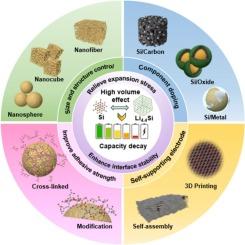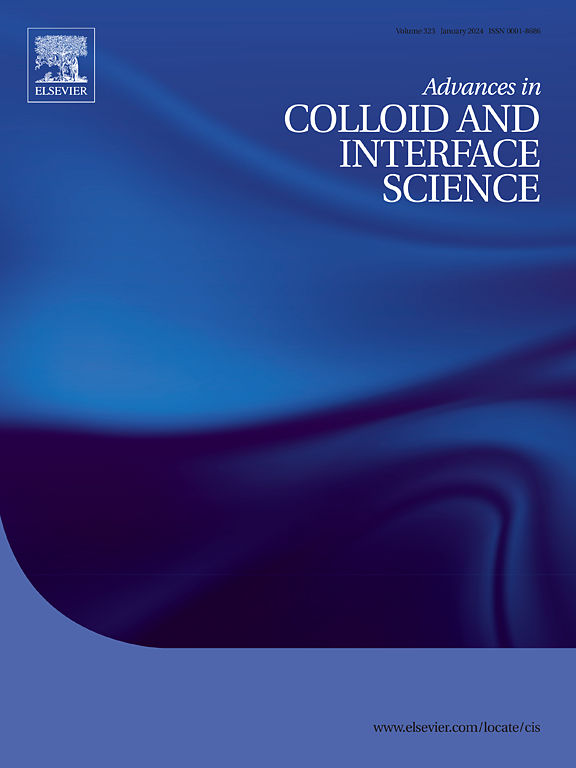锂离子电池硅基阳极的研究进展与展望
IF 19.3
1区 化学
Q1 CHEMISTRY, PHYSICAL
引用次数: 0
摘要
硅基负极因其高比容量、适宜的使用潜力和丰富的自然储量,成为下一代锂离子电池最有前途的负极材料。然而,硅颗粒在锂化/锂化过程中的剧烈体积效应导致颗粒粉碎化、电极结构崩溃和固体电解质界面(SEI)膜不稳定,从而导致硅基阳极的快速可逆容量退化。深入分析硅基电极的失效机理,探索合适的改进方法,以达到更高的容量保留是十分必要的。本文系统总结了硅基阳极的改进策略,包括调整材料粒度、优化结构和组成、探索新的粘结剂及其增强机制。此外,还讨论了近年来新发展的基于3D打印技术的高性能硅基电极的制备。最后,提出了硅阳极的几个可能的发展方向和面临的挑战,以促进其在实际应用中的进一步改进。总的来说,这篇综述有望为硅基材料在下一代锂离子电池负极中的实际应用提供基本的理解和见解。本文章由计算机程序翻译,如有差异,请以英文原文为准。

Advances and future perspectives on silicon-based anodes for lithium-ion batteries
Silicon (Si)-based anode has emerged as the most promising anode material for next-generation lithium-ion batteries (LIBs) due to its high specific capacity, suitable operating potential and abundant natural reserves. Nevertheless, the drastic volume effect of Si particles during lithiation/delithiation leads to particle pulverization, electrode structure collapse, and solid electrolyte interfacial (SEI) film instability, which results in a rapid reversible capacity degradation of Si-based anodes. It is essential to deeply analyze the failure mechanism of silicon-based electrodes and explore suitable improvement methods to achieve higher capacity retention. Herein, we systematically summarize the improvement strategies for Si-based anodes, including regulating material particle size, optimizing structure and composition, and exploring new binders, along with their enhancement mechanisms. In addition, the preparation of high-performance Si-based electrodes based on newly developed 3D printing technology in recent years is discussed. Lastly, several possible directions and emerging challenges for Si anode are presented to facilitate further improvement in practical applications. Overall, this review is expected to provide basic understanding and insights into the practical application of Si-based materials in next-generation LIBs negative electrodes.
求助全文
通过发布文献求助,成功后即可免费获取论文全文。
去求助
来源期刊
CiteScore
28.50
自引率
2.60%
发文量
175
审稿时长
31 days
期刊介绍:
"Advances in Colloid and Interface Science" is an international journal that focuses on experimental and theoretical developments in interfacial and colloidal phenomena. The journal covers a wide range of disciplines including biology, chemistry, physics, and technology.
The journal accepts review articles on any topic within the scope of colloid and interface science. These articles should provide an in-depth analysis of the subject matter, offering a critical review of the current state of the field. The author's informed opinion on the topic should also be included. The manuscript should compare and contrast ideas found in the reviewed literature and address the limitations of these ideas.
Typically, the articles published in this journal are written by recognized experts in the field.

 求助内容:
求助内容: 应助结果提醒方式:
应助结果提醒方式:


